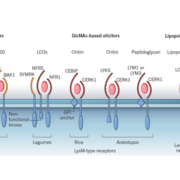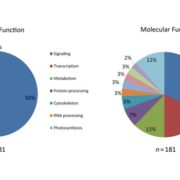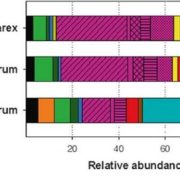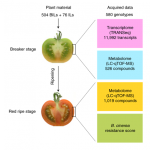The love potion made by soil-borne fungi (Plant Cell Environ.)
 The basic requirements for plant growth are water, nutrients, and light. There are many other factors contributing to plant growth, including the interactions between plants and soil microorganisms. Soil microorganisms produce a large array of volatiles that can affect root architecture (e.g., some volatiles result in shortened primary roots and increased lateral root formation), but it remains unknown whether the volatiles affect directional root growth. To address this question, Moisan et al. designed a Y-tube olfactometer to test the directional preference of Brassica rapa primary root growth, with or without the presence of fungi-released volatiles. Of the four soil-borne fungi tested, only Rhizoctonia solani mediated directional root growth preference: B. rapa grew towards volatiles released by R. solani. Despite the primary root directional preference, the primary root length and total root dry weight were not affected by the tested fungal volatiles. Comparing volatile profiles between the four tested fungi revealed six volatiles that were unique to R. solani, none of which had been found to promote root growth previously; perhaps timing, duration, and concentration of volatiles as well as interplay between multiple volatiles contributed the disparity. This paper provides an expandable experimental setup for quantitatively investigating directional root growth. Interestingly, among the four tested fungi, R. solani was the only one pathogenic to B. rapa, suggesting volatiles can be a means by which a pathogenic fungus can manipulate plant growth, or as the authors put it – “fatal attraction.” (Summary by Yun-Ting Kao @YTingKao) Plant Cell Environ. 10.1111/pce.13890
The basic requirements for plant growth are water, nutrients, and light. There are many other factors contributing to plant growth, including the interactions between plants and soil microorganisms. Soil microorganisms produce a large array of volatiles that can affect root architecture (e.g., some volatiles result in shortened primary roots and increased lateral root formation), but it remains unknown whether the volatiles affect directional root growth. To address this question, Moisan et al. designed a Y-tube olfactometer to test the directional preference of Brassica rapa primary root growth, with or without the presence of fungi-released volatiles. Of the four soil-borne fungi tested, only Rhizoctonia solani mediated directional root growth preference: B. rapa grew towards volatiles released by R. solani. Despite the primary root directional preference, the primary root length and total root dry weight were not affected by the tested fungal volatiles. Comparing volatile profiles between the four tested fungi revealed six volatiles that were unique to R. solani, none of which had been found to promote root growth previously; perhaps timing, duration, and concentration of volatiles as well as interplay between multiple volatiles contributed the disparity. This paper provides an expandable experimental setup for quantitatively investigating directional root growth. Interestingly, among the four tested fungi, R. solani was the only one pathogenic to B. rapa, suggesting volatiles can be a means by which a pathogenic fungus can manipulate plant growth, or as the authors put it – “fatal attraction.” (Summary by Yun-Ting Kao @YTingKao) Plant Cell Environ. 10.1111/pce.13890









